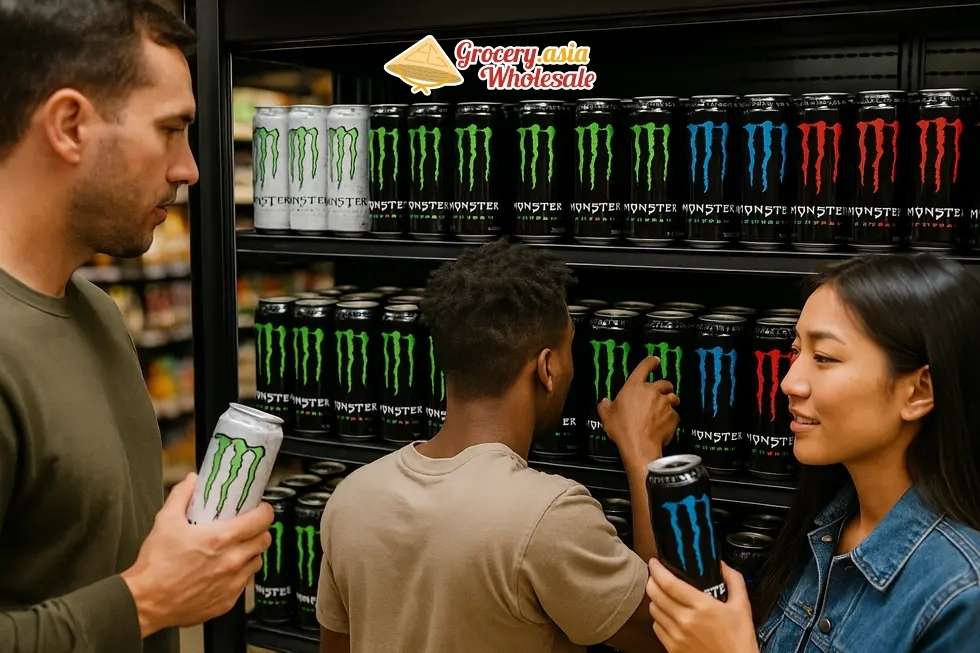No products in the cart.
Beverages News, Energy Drinks, Monster Energy Drink
Unleashing Monster: A Global Phenomenon in the Beverage Industry
Monster Energy’s journey from a niche product under a juice company to a leading energy drink brand is nothing short of exceptional. This article delves into the strategic steps that propelled Monster to astounding heights, appealing to wholesale importers eager to replicate such success. We begin with the brand’s origins, explore its unique marketing strategy, and examine the powerful brand identity built through sponsorships. Additionally, we track key corporate growth milestones and highlight Monster’s digital marketing evolution to maintain relevance in a competitive market.
Table of Contents
From Humble Beginnings to a Bold Brand: The Birth of Monster Energy

The Monster Beverage Corporation traces its roots back to 1935, when Hubert Hansen and his sons ventured into Southern California’s beverage market with a line of fresh fruit juices. Their company, originally known as Hansen’s, built a reputation for quality and innovation in the beverage industry. It enjoyed steady growth, shifting its focus from juices to include sodas and other beverages by the 1970s, under the leadership of Hubert’s grandson, Tim Hansen.
However, the late 1980s were challenging. The company encountered financial difficulties, resulting in a bankruptcy filing in 1988. Yet, this seeming setback became a turning point. The acquisition by California CoPackers Corporation led to a rebirth under the name Hansen Natural Company, setting the stage for future success. By going public in 1990, Hansen Natural capitalized on its IPO, ushering in a new era for growth and innovation.
The pivotal shift towards energy drinks began in 1997 with the introduction of Hansen’s Energy—a nod to the burgeoning popularity of these high-growth products. This strategic move paved the way for the creation of Monster Energy in 2002, marking the company’s aggressive entry into the energy drink market. Learn more about Monster’s market influence in this consumer report.
The Formula Behind Monster’s Market Dominance
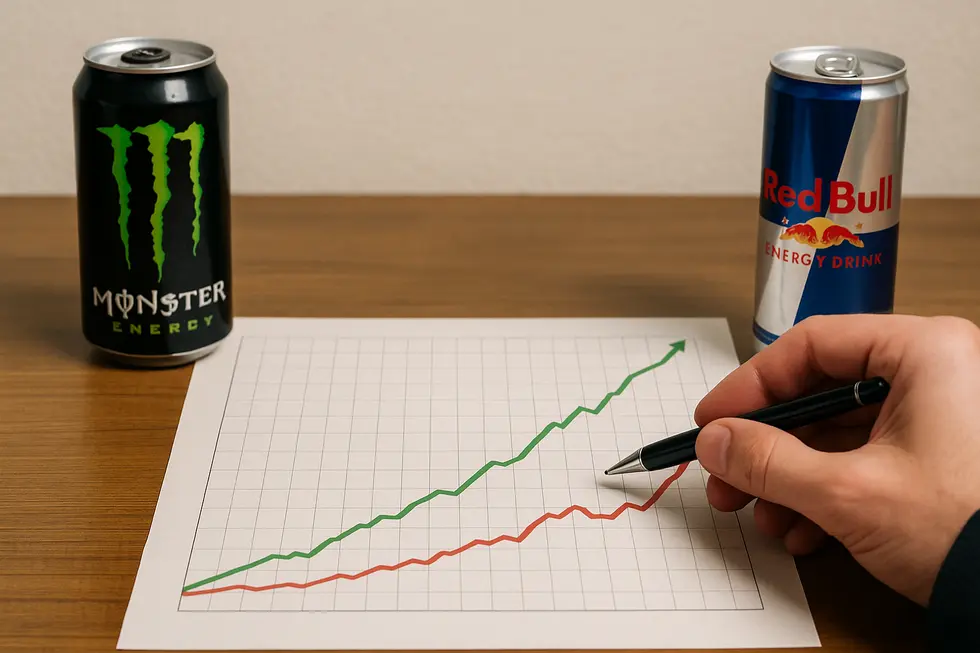
Monster Energy’s meteoric rise in the beverage industry can be largely attributed to its ingenious and frugal marketing strategies. Despite spending substantially less on advertising compared to its closest rival Red Bull, Monster has carved out a significant market share, currently holding about 30.1% in 2022. Their marketing strategy is rooted in building strong emotional connections with consumers and leveraging an edgy brand identity.
Edgy Branding and Lifestyle Alignment: Monster’s brand has expertly tapped into youth culture through sponsorship of extreme sports like motocross and UFC, embedding the drink as a lifestyle choice rather than just a beverage. This extensive involvement has cultivated an authentic and loyal fan base, eager to embrace the rebellious spirit Monster embodies.
Digital Engagement and Influencer Power: Adapting to the digital age, Monster harnesses the power of social media platforms like Instagram and YouTube. Collaborating with influencers, Monster crafts content that resonates with its audience, effectively promoting its high-energy ethos.
Strategic Alliances for Distribution: A pivotal partnership in 2014 with Coca-Cola maximized Monster’s distribution capabilities without inflating advertising costs, utilizing Coca-Cola’s network for global reach. This enabled Monster to maintain cost efficiency while scaling internationally.
This combination of strategic positioning and efficient resource allocation exemplifies how Monster Energy has emerged as one of the most rapidly growing energy drink brands worldwide. For further insights into Monster’s distribution strategies, visit red-bull-tray-wholesale.
Fueling Culture: How Monster’s Sponsorships Propel Brand Success
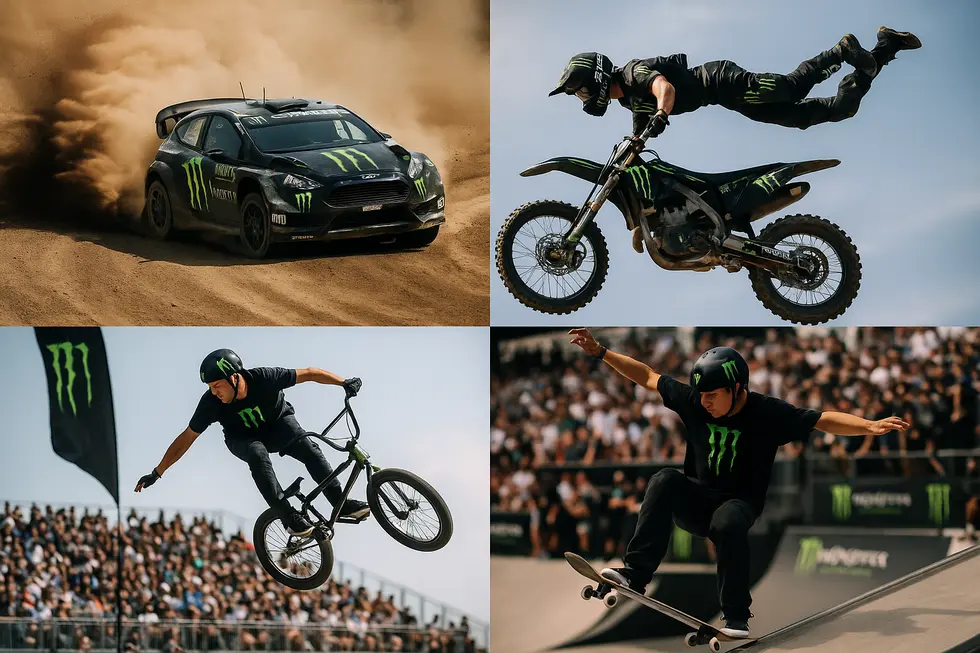
Monster Energy’s brand identity is deeply entrenched in its strategic sponsorships across extreme sports, music, and motorsports. These partnerships are not merely promotion avenues but serve as powerful narratives that harmonize with their target audience’s desire for excitement and thrill.
Aligning with the vibrancy of extreme sports, Monster sponsors events like the X Games, motocross, and UFC, directly engaging with youth who thrive on adrenaline and excitement. The iconic Monster logo, prominently displayed in these high-octane environments, strengthens its association with energy and performance. The partnership with UFC since 2015 is a testament to this, as the brand becomes intrinsic to fighters’ experiences during events.
Moreover, Monster extends its reach by infiltrating the music scene, supporting bands that resonate with the youthful, rebellious spirit of its audience. This approach cultivates a cultural relevance that transcends traditional marketing boundaries.
In motorsports, the collaboration with McLaren Formula 1 injects Monster’s signature verve into a prestigious global stage, connecting with younger fans through captivating storytelling.
The strategic alliance with Coca-Cola in 2014 further expanded Monster’s distribution reach, amplifying the impact of their sponsorships globally source.
Such sponsorship strategies ensure Monster Energy remains a bold, dynamic brand, seamlessly integrating into the lifestyles and aspirations of its consumers.
Unveiling Milestones: Monster Energy’s Strategic Growth and Expansion
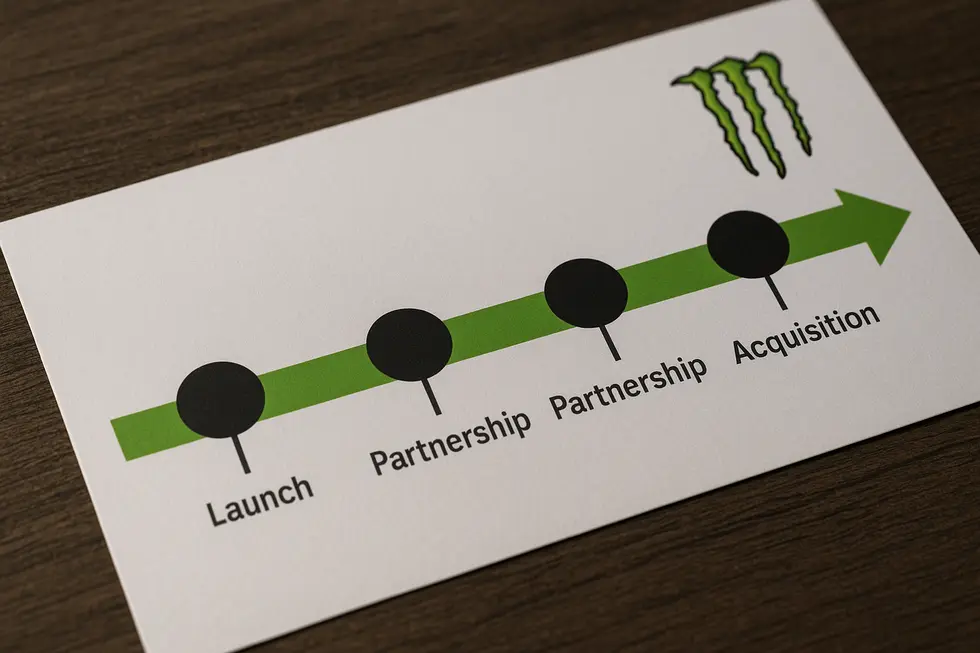
From its inception in 2002 under Hansen Natural Company, Monster Energy has charted an impressive growth trajectory marked by strategic decisions that have solidified its market presence. Initially, the brand swiftly distinguished itself in the energy drink sector, attaining a robust 30.1% of the U.S. market by 2022. This rapid ascent was propelled by Monster Energy’s expansive product lineup, boasting over 150 flavors globally by 2025, catering to diverse consumer tastes.
Strategic sponsorship played a pivotal role in Monster’s growth. The brand’s association with extreme sports and popular culture, through events like UFC and NASCAR, fueled its edgy persona, engaging a youthful demographic. Iconic partnerships, such as those with Tiger Woods and significant Formula 1 teams, further anchored its cultural relevance. Monster additionally ventured into the music industry, facilitating connections with fans through diverse genres.
While the brand’s journey parallels the rapid early expansion of Monster.com, their paths diverge with the latter’s decline amid escalating competition. Monster Energy, contrarily, embraced innovative marketing strategies, aligning its brand with youth-centric experiences and cultural trends. For those intrigued by Monster Energy’s growing demand, further insights are available in this consumer report, offering a detailed examination of its market dynamics.
Thriving in the Digital Sphere: Monster Energy’s Strategic Shift
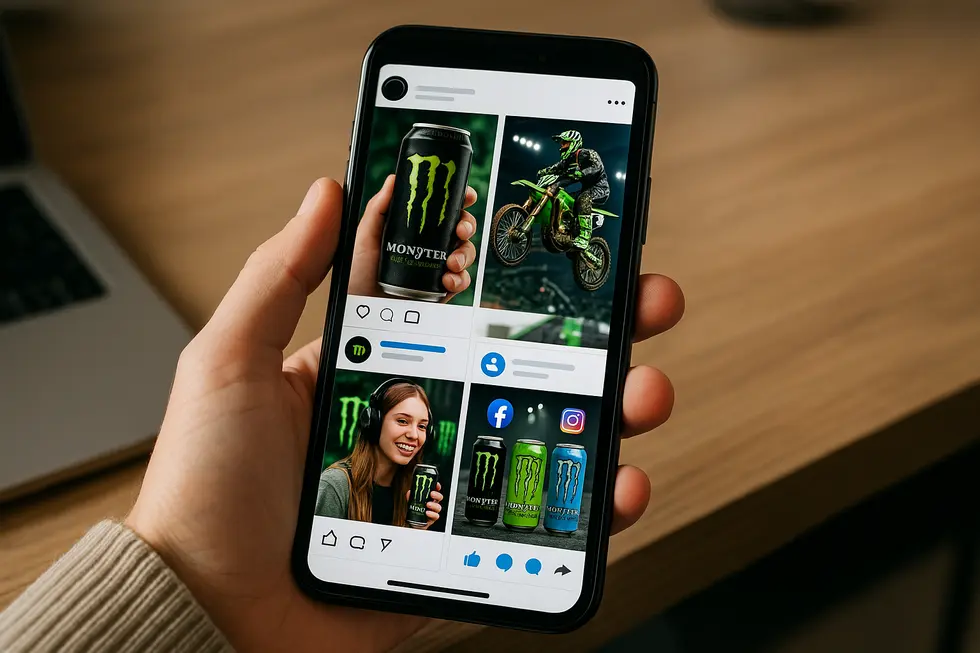
Monster Energy’s digital marketing evolution is a testament to the power of adapting to modern consumer habits. The brand leveraged social media platforms such as Instagram and YouTube to resonate with its core demographics—youth who are passionate about extreme sports and dynamic lifestyles. This strategic focus enables Monster Energy to foster authentic connections with its audience through engaging content that aligns perfectly with its brand ethos.
Transitioning from traditional advertising methods, Monster zeroed in on measurable engagement and brand loyalty. Unlike early entrants like CareerBuilder, which stuck to widespread commercials, Monster’s pivot toward digital marketing prioritizes targeted interactions. This has enabled them to maintain relevancy in a rapidly shifting market.
A cornerstone of their digital success lies in strategic partnerships and event sponsorships. The pivotal 2014 partnership with Coca-Cola expanded Monster’s reach through enhanced distribution capacities. Meanwhile, aligning with extreme sports events like the X Games bolstered their youthful image. Monster also smartly crafts partnerships with influencers, seizing opportunities in emerging marketing trends.
In this digital age, Monster Energy epitomizes a brand thriving by leveraging digital strategies, driven by deep insights into consumer behaviors and preferences. Their success story is a powerful narrative of understanding the pulse of the digital world to maintain and expand vibrant brand connections. For further insights on their digital tactics, the IIDE case study offers a detailed exploration of their marketing approach.
Final thoughts
Monster Energy’s success story showcases a masterclass in strategic branding, marketing, and growth milestones. By understanding and implementing Monster’s approach, wholesale importers can emulate similar success. As the brand continues to evolve, its commitment to innovation and consumer engagement remains a blueprint for success in the beverage industry.
👉 Inspired by Monster’s success? Let’s work together to bring high-demand brands to your region.
About us
Asia Grocery Co., Ltd is a trusted distributor, wholesaler, and exporter of fast-moving consumer goods (FMCG) from Vietnam, backed by over 20 years of expertise. We deliver authentic products from globally recognized brands such as P&G, Unilever, Redbull, Coca-Cola, Pepsi, Asiadeli, along with traditional and culturally significant Asian products, catering to customers worldwide with a special focus on Vietnamese and Asian communities abroad.

